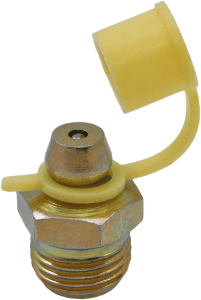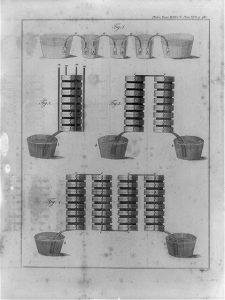For years. we’ve been helping companies save money on parts – from agricultural and industrial, to mechanical and fleet services. Our staff moves a lot of inventory, day in and day out, and there’s not much thought given to how these products ever came to be.
But that grease zerk, screw anchor, and other tools and parts have a history that’s worth exploring.
So let’s…
Galvanized Steel
Covering metal with zinc to prevent rusting reportedly comes from Luigi Galvani, an 18th-century anatomist from Italy who experimented in electrocuting dead frogs. “To galvanize” meant to shock by electricity.

The Grease Zerk
The grease zerk was invented by Oscar Ulysses Zerk (born Oscar Zerkowitz). A native of Austria, Zerk’s last name was shortened after he emigrated to the United States. He was an inventor and “motor car engineer” who patented hundreds of inventions, one of them being the check-valve lube fitting. (Reportedly, he also invented a personal coffee bean grinder.)
Phillips Head Screwdriver
The screwdriver with the X-shaped head is credited to Henry F. Phillips of Portland, Oregon, yet it originally was designed by John P. Thompson, who filed a patent in 1932. Thompson sold the design to Phillips in 1935, and it’s been attached to the Phillips name ever since. (US Patent 1908081 A)
Diesel Engine
The diesel engine was invented by Herbert Akroyd Stuart, who patented an oil-fired engine in 1890. However, the diesel engine is credited to Rudolf Diesel because his prototype was a higher compression version. (US Patent 502837 A and US Patent 542846 A)
Wall (Rawl) Plug
The wall plug, screw anchor (also called a rawlplug and dowel) is named after its inventor, John Joseph Rawling. A British engineer and contractor, he invented the rawlplug in 1911. A patent was granted in 1913. (US Patent 2191399 A)
Amps
This unit of electric current is named after French physicist Andre-Marie Ampere, whose fascination with how electric currents produce a magnetic effect led to his discovery: When electric currents flow in the same direction on nearby parallel wires, the wires are drawn to each other; when currents flow in the opposite direction on nearby parallel wires, the wires repel each other. (electromagnetism).

Volt
Another unit of measuring electric current (joule per second), volt comes from Italian physicist (and Count) Alessandro Volta. Volta invented the electric battery and was the first to rank electrode potentials.
Watt
The last of the three common units of measuring electric current, the watt comes from James Watt, a Scottish engineer. He is called the father of the industrial revolution after having improved the steam engine. Watt is also credited with inventing the copy machine, and other devices.
Allen Wrench
Also called a hex wrench, the allen wrench is credited to William G. Allen, owner of the Allen Manufacturing Company of Hartford, Conn. There were many similar patents filed around the same time. However, in the United States, his company was the first to produce the hex key known as the Allen wrench, in 1910. (US Patent 960244 A)
Curious about any other origins of tools? Here are the sources that were most helpful in compiling this list: geni.com; etymonline.com, wikipedia.com, https://www.dieselnet.com/tech/diesel_history.php, http://www.researchpod.co.uk, www.famousscientists.org, eHow.com, www.quora.com, findagrave.com, Google.com/patents, visionlaunch.com.

